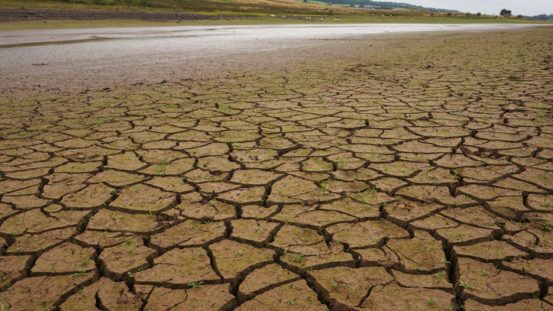Water stress including both drought and intense rainfall will be the main climate change risk affecting the UK and Europe in the next 30 years, exclusive analysis from S&P Global for ESG Clarity shows.
S&P’s sustainability researchers looked at seven physical climate risks: wildfire, coldwave, heatwave, water stress, river flood, coastal flood and hurricanes, and ranked them according to their potential impact on the UK by 2050.
Using the S&P Global Trucost Physical Risk dataset, researchers assessed risk on a scale from 1 to 100, where one is the maximum physical risk. Running a scenario for the impact on the UK in 30 years’ time, S&P assumed ‘business as usual’, meaning carbon emissions stay at current levels, which would lead to a four degree rise in global temperatures – effectively a worst-case scenario.
Under these parameters, it gave the UK an absolute risk exposure score of 21 for water stress. This includes water scarcity as supplies fail to meet demand from households, agriculture and industry, for instance.
Knock-on impact of droughts
A report S&P published last year found that water stress is the most significant medium-term climate risk facing all Europe’s largest economies. It pointed to the heaviest rainfall ever to hit Western Europe, which occurred last summer, causing devastating flash floods and showing that even rich, developed nations are not immune from the physical consequences of climate change. Europe may also face droughts in the next 30 years, which could impact food producers and brewers, “change the risk profile on businesses and have a knock-on effect on banks, insurers and investors.”
The second and third major climate-rated threats to the UK are coldwaves and heatwaves, or prolonged periods of unusually hot or cold temperatures.
River and coastal flood scores are lower still, but Steve Bullock, managing director, global head of ESG innovation and solutions at S&P, explained that’s not to say there is no risk here in the UK’s future, it’s just that the risks have been averaged out across the whole UK.
Overall, the scores aren’t high on a scale of 1-100, even in the worst-case scenario that was modelled, so how much do we actually need to worry?
“It’s fair to say that, on average, the UK would face moderate levels of climate risk. But what this doesn’t consider is the financial implications and the impact on the economy and that’s where we are doing further analysis,” Bullock said .
“What this shows you is that water scarcity will be increasing over time if there are no efforts to reduce the impacts of climate change. Now, if you’re looking at river basins across the UK, that will mean some businesses and some industries will be facing shortages of water or water stress where demand exceeds supply.”
S&P’s analysis has found that 23% of agricultural land within the UK will be exposed to water stress in the future, he added.
The global picture
Looking globally, S&P Global Ratings has found that physical climate risks could expose as much as 4.5% of world GDP to losses by 2050, assuming no action is taken on climate change. It says corporate infrastructure in Asia, East Asia, the Middle East and North America is most exposed to severe weather events and other climate change dangers.
S&P Asia Pacific index faces substantially greater hurricane exposure than the S&P Europe 350 index, while wildfires are a bigger risk factor for the S&P 500. Meanwhile sea level rise is a bigger risk for the S&P 500 than the European index. Water stress is a substantial risk factor for each of the indices, the groups’ analysts say.
S&P analyses data from 11,000 public and private companies and around 12.7 million physical assets linked to those companies, such as offices, manufacturing sites or datacentres. “We have found that 66% of the largest global companies have at least one asset at high risk of the physical impact of climate change,” said Bullock.
The physical assets owned by utilities, materials, energy, consumer staples and healthcare companies will face the greatest climate-related risks by 2050, according to S&P Global Trucost data. Water stress is likely to be a particular problem for the utilities and materials sectors.
Bullock said businesses are using climate risk research like this to look across their supply chains and their operational sites to see where they can reduce risk. It can also help improve disclosure and allow investors take that risk in to account when making investment decisions.
“What investors are using this information for is to understand, across their portfolios, what their exposure is to different risks and then using that as a tool to engage with companies. That means understanding how they’re managing these risks, how they are reporting on them and what governance structures they have in place to manage them.”
Top climate change-related physical risks facing the UK
| Wildfire | Coldwave | Heatwave | Water stress | River flood | Coastal flood | Hurricanes | |
| Absolute risk exposure scores | 1 | 17 | 11 | 21 | 1 | 1 | 1 |








